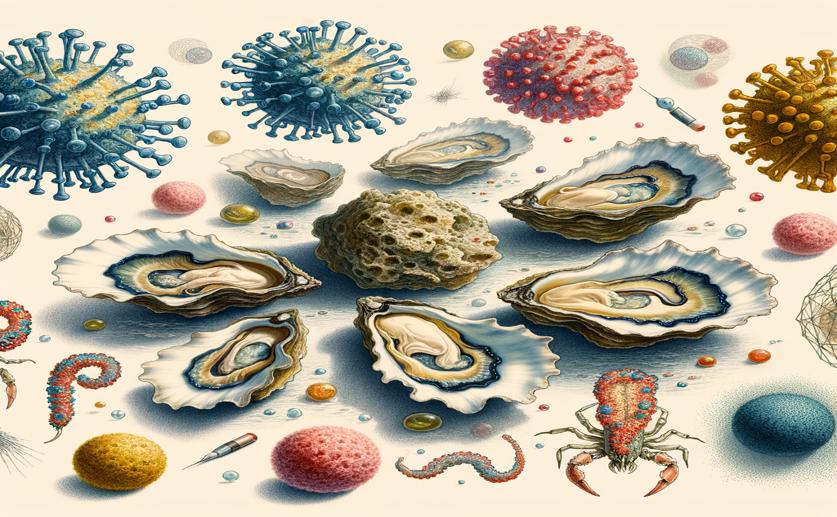
How Oysters' Immune Systems Interact With Their Microbes
Jim Crocker
20th March, 2024

Image Source: Natural Science News, 2024
Key Findings
- In coastal waters, Pacific oysters' immune systems are boosted for life by early exposure to diverse microbes
- Oysters produce special proteins to maintain a healthy balance of these microbes
- Disruption of this balance by diseases like POMS can lead to fatal infections in oysters
References
Main Study
1) Cross-talk and mutual shaping between the immune system and the microbiota during an oyster's life.
Published 18th March, 2024
https://doi.org/10.1098/rstb.2023.0065
Related Studies
2) Cooperation and cheating orchestrate Vibrio assemblages and polymicrobial synergy in oysters infected with OsHV-1 virus.
3) Ecology-relevant bacteria drive the evolution of host antimicrobial peptides in Drosophila.
4) Epigenetic variations are more substantial than genetic variations in rapid adaptation of oyster to Pacific oyster mortality syndrome.



 11th March, 2024 | Jenn Hoskins
11th March, 2024 | Jenn Hoskins